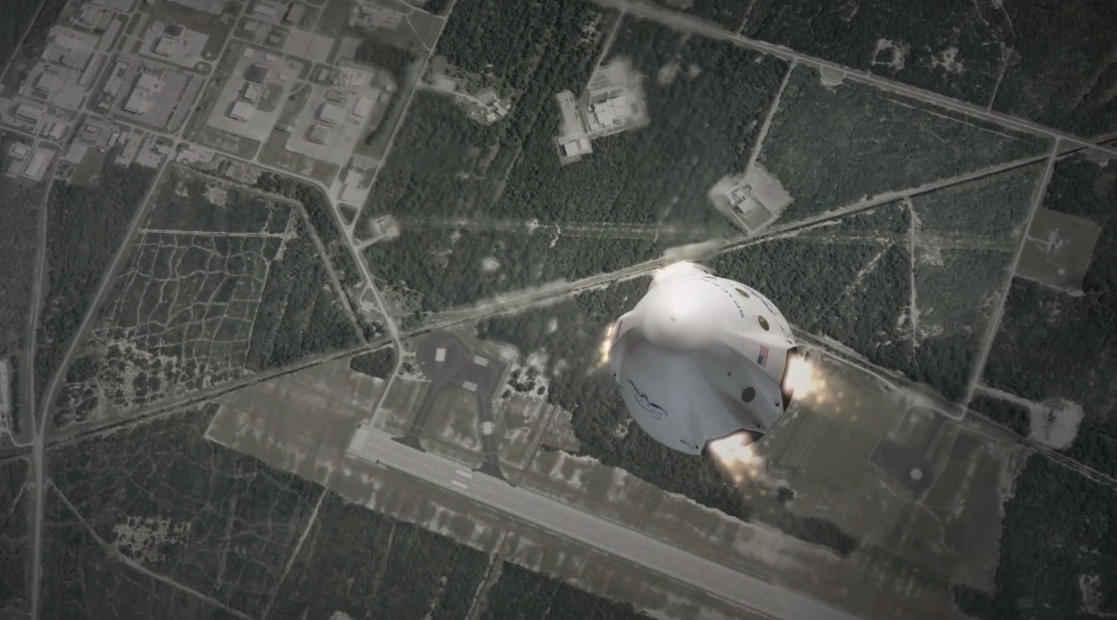Visionary inventor

Inventor Elon Musk unveiled the newest version of his spacecraft, the Dragon V2, in a press conference on May 29.
Sleek interior

The capsule can hold up to 7 astronauts for several days, unlike the earlier version of the craft, which solely transported cargo.
Future space taxi

The new spacecraft is designed for vertical takeoff and landing and can be reused multiple times.
Earlier version

The earlier version was less powerful and still used parachutes for landing, which prevented reuse of the craft.
Undocking

The earlier Dragon spacecraft has been used on several cargo flights to the International Space Station, shown here.

A close-up of one of the seven seats, and seatbelts, aboard SpaceX's new Dragon V2 space capsule, designed to send astronauts to the International Space Station. SpaceX released this image on May 29, 2014, ahead of the unveiling of the space capsule.
Dragon V2 Land

"You'll be able to land anywhere on Earth with the accuracy of a helicopter," Musk said in a press conference at the SpaceX headquarters in Hawthorne, California, on May 29, 2014. Here, a still from an animation shown during the press briefing.
Get the world’s most fascinating discoveries delivered straight to your inbox.
21st-Century Landing

The ship is designed to land, be quickly refueled with propellant, and launch again. "That is how a 21st-century spaceship should land," Elon Musk said May 29, 2014, during the unveiling of SpaceX's Dragon V2 space capsule at the SpaceX headquarters in Hawthorne, California.
Dragon V2 Unveiling

Elon Musk unveils the Dragon V2 space capsule on May 29, 2014, during a press briefing at the SpaceX headquarters in Hawthorne, California.
Dragon V2 - ISS

The Dragon V2 spacecraft is designed to launch into low Earth orbit and send astronauts to the International Space Station, replacing the pricy ships used in the past. The sleekly designed Dragon V2 has a retooled heat shield that will withstand multiple re-entries, unlike the disposable vehicles used now. Here, a still from an animation shown during the unveiling of the capsule on May 29, 2014 at the SpaceX headquarters in Hawthorne, California.
Entering the capsule

Here, Elon Musk stands in the Dragon V2 capsule, revealing its seven seats, on May 29, 2014, during a press briefing at the SpaceX headquarters in Hawthorne, California.

Tia is the editor-in-chief (premium) and was formerly managing editor and senior writer for Live Science. Her work has appeared in Scientific American, Wired.com, Science News and other outlets. She holds a master's degree in bioengineering from the University of Washington, a graduate certificate in science writing from UC Santa Cruz and a bachelor's degree in mechanical engineering from the University of Texas at Austin. Tia was part of a team at the Milwaukee Journal Sentinel that published the Empty Cradles series on preterm births, which won multiple awards, including the 2012 Casey Medal for Meritorious Journalism.


